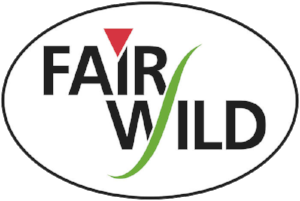FairWild partnerships grow through global hub for nature conservation
Cambridge, UK - April 2016. This week was all about collaboration for conservation, as a new global conservation hub in Cambridge, UK, was formally opened on 6th April. Located in the David Attenborough Building, the new campus acts as a centre for the Cambridge conservation 'cluster' - the largest grouping of nature conservation organisations and university researchers in the world.
The campus was officially opened by Sir David Attenborough, after whom the building housing the campus has been named. Sir David has links with many of the organisations based in the campus and is a graduate of the University of Cambridge. In preparation for the opening event, Sir David gained a unique ‘plant’s-eye-view’ of this special building a few weeks ago, abseiling down the 13 metre high living wall in the central atrium.
Initiatives promoting sustainable use of wild plants and the FairWild Standard were on show at the opening event, at exhibits organised by TRAFFIC, partner of the FairWild Foundation and host of the FairWild Secretariat. Visitors to the "Wildlife Trade Hub" stand learned about wildlife trade issues connected with hornbills - the fate of the Helmeted Hornbill Rhinoplax vigil, a victim of trade targeted for its beak, being contrasted with that of the Great Hornbill Buceros bicornis, a species benefitting from a FairWild initiative focused on sustainable trade of fruits from its nest tree.
Over on the "Private Sector Engagement" stand, the collaborative partnerships behind FairWild were introduced by TRAFFIC and IUCN, two of the founding organisations of the FairWild Standard, and members of the Cambridge Conservation Initative. Products with FairWild-certified ingredients provided tangible examples of how the private sector is taking a lead on sustainable sourcing of wild plant ingredients.
Susan Curtis, Neal's Yard Remedies, participates in the interactive art exhibition through overwriting the name of Nardostachys jatamansi, a plant species classed as Critically Endangered on the IUCN Red List © TRAFFICFairWild also featured in the art exhbition "Conflicted Seeds and Spirits", commissioned in response to the refurbishment and redevelopment of the David Attenborough Building. Organisations and individuals connected with FairWild Standard implementation projects in Kenya and India contributed seeds and shared field experiences with the artists Ackroyd & Harvey, in an artwork which juxtaposes and explores the preservation of the Zoology Museum’s historical specimens with the dynamics of contemporary biodiversity conservation projects.
The driving force behind the campus’s creation is the Cambridge Conservation Initiative (CCI), a strategic collaboration founded in 2007 between the University of Cambridge and nine biodiversity conservation organisations, including TRAFFIC, whose headquarters office is now based on the campus.
In Sir David’s words, “The future of our life on Earth is dependent on the natural world – for the air we breathe, the food we eat and the water we use – and for the feelings we have of awe and wonder at nature’s extraordinary riches. In this remarkable age we are learning more and more about the intricacies of our dependence on nature. Yet our natural world is threatened as never before. The threats are both numerous and interrelated, and no one institution, however effective, can hope to address them all alone."
"It is for this reason that the work of the Cambridge Conservation Initiative is so exceptional. By bringing together leaders in research, practice, policy and teaching, we stand the greatest chance of developing the solutions required to save our planet. I am enormously proud that these collaborations are occurring in a building bearing my name.”
Over 500 conservation experts have moved into the campus, including 150 academics from seven departments from the University of Cambridge, and over 350 conservation practitioners from CCI’s conservation organisation partners. Over the coming years these individuals will be working together, using the campus as a hub, to develop effective solutions to the challenges faced by the natural world, such as developing new guidance on conservation issues for policy makers, seeking novel methods of communicating the importance of our natural world, and producing innovative ways of protecting species and habitats around the world.

